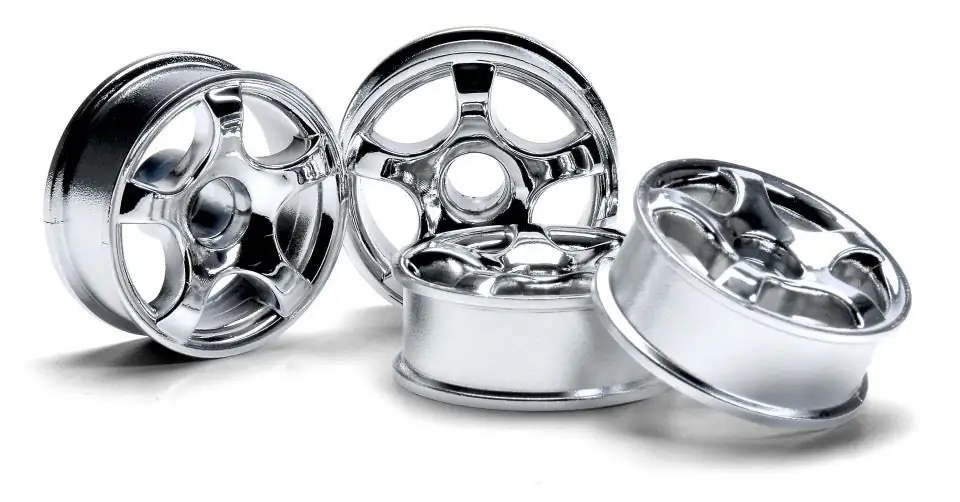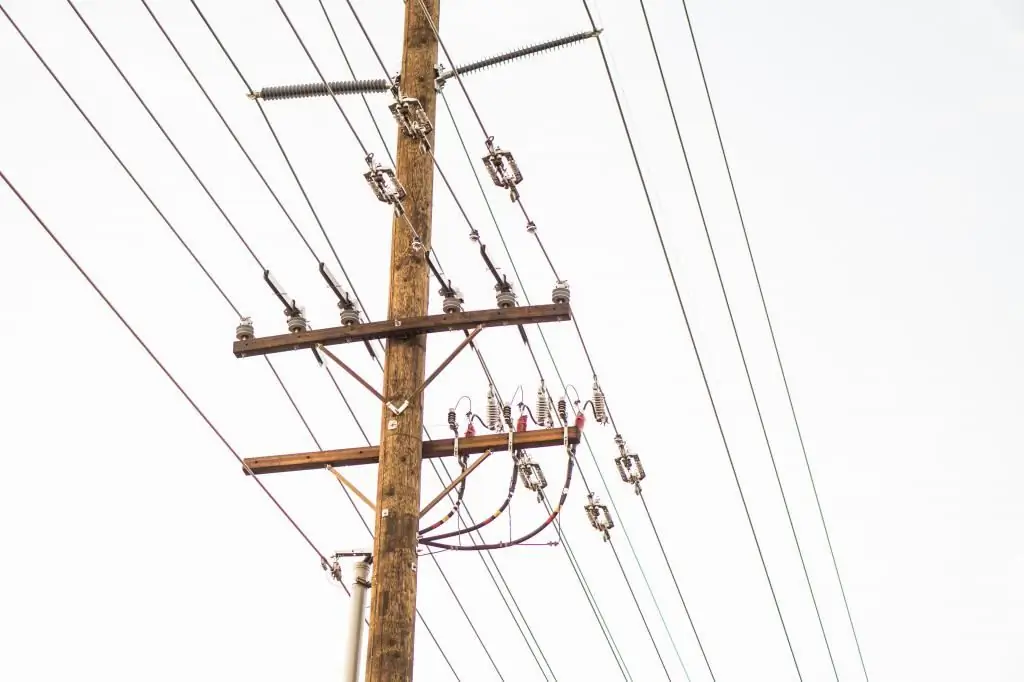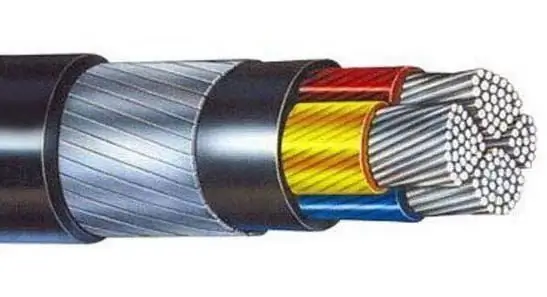2025 Author: Howard Calhoun | [email protected]. Last modified: 2025-01-24 13:10:26
Aluminum cable, like any other, has a number of basic characteristics. This list includes such parameters as the material and cross-section of the core, the material for insulation and the number of wires in the core.
First characteristic
So, the first parameter is the core material. In everyday life, people most often resort to the use of three main cables: copper, aluminum and aluminum-copper. If we talk about aluminum cable, we can highlight such positive qualities as low cost, light weight, good electrical conductivity, good heat transfer, chemical resistance.

However, there are some disadvantages of this wire:
- Very little material flexibility. If you bend an aluminum wire several times in the same place, it will break. It follows from this that the operation of this type of cable is acceptable only in stationary installations without sharp corners, turns, etc.
- Oxidation on contact with air. When air interacts with this metal, aluminum oxide appears. This is a very refractory black film that covers the core. The whole trouble is that the oxide iscomplete dielectric. For this reason, in places where the film is formed, the electric current practically does not pass.
- Aluminum is considered a good conductor, but this is only if the material is pure, that is, does not contain impurities. This is currently very difficult to achieve.
Second parameter - section
The cross section of an aluminum cable is a rather important characteristic that applies to any type of conductor. If we talk about wires in general, then their cross section can be in the range from 0.3 to 800 mm2. However, it should be said that it is not recommended to use such wires in everyday life. The most common section is from 0.35 to 16mm2. Rarely, but still, 25 mm cables are used2.

In order to determine what section is needed in a particular wiring, it is necessary to be based on the current strength and voltage that will be in the network. The dependence of these parameters is very simple. The thicker the cross section of the cable, the greater the conductivity it has. Another small but important characteristic of a cable with aluminum conductors is their number. Depending on this indicator, the flexibility of the entire wire as a whole will change. The dependence of this characteristic is as follows - the more conductors per section, the more flexible the wire will be.
Insulation
If you choose the most important characteristic of aluminum cables, it will be the insulating material. It is this element that determines what qualities the wire will have. Depending on the insulation, there aresuch types of cables: armored, heat-resistant, waterproof, with pressure protection, etc. Since electric current is a real danger to human life, the issue of cable insulation is the most important part of its operation. However, it should be said here that insulation is needed not only to protect a person, but also to protect the conductor itself. This is best seen if there is stranded wiring.
Insulation challenge and dielectric strength
If we talk about the main tasks of insulation, then they include the following: protection against leakage, as well as against electric shock, thermal and mechanical protection of the cable itself, indication of conductors. It is worth noting here that there are a lot of materials used for insulation, as well as types of insulation. It will take a huge amount of time to consider all the species, and besides, it makes no sense. It is best to decide on those that are applicable in domestic conditions.

Currently, there are two main types. The first is TPZh - a conductive core, as well as a sheath covering the core from the outside. The main parameter by which the material for insulation is selected is electrical strength. This parameter can be described as follows: this is the value of the current strength, which will be enough to break through a layer of insulating material with a thickness of 1 mm. It should be noted that all cables that are used in domestic conditions have a huge electrical strength, and therefore the breakdown of electric current is possible only in case of mechanical damage.cable insulation itself.
Heat resistance
The second characteristic of the insulating material used to cover the aluminum cable is heat resistance. Everything is quite simple here: the larger this value, the greater the heating temperature the material can withstand without losing its properties. This is a rather important quality, since everyone knows that when an electric current passes, the conductor heats up. If the value is not large enough, the insulating material will melt. This also includes such qualities of the wire as resistance to frost and mechanical strength. Naturally, the stronger and more tear-resistant the insulation, the better.

One of the most common insulation materials today is polyvinyl chloride (PVC). This product shows its best qualities when resisting alkalis and other acids. The disadvantages of this material include the fact that it has a rather low resistance to frost - only up to -20 degrees Celsius.
Power cable with aluminum conductors
These cables are mainly used in high voltage power lines. It is worth noting here that at elevated temperatures the value of the voltage carrying capacity of such a cable does not change. However, with the reverse action, that is, with a decrease in temperature, the throughput will also decrease. Power aluminum cable is quite widespread due to the fact that it has a low cost. However, it also has a smallweight even with large dimensions. It is these advantages that distinguish a cable with an aluminum core from a cable with a copper one.

However low cost is not always good. Feedback from buyers and electricians is quite controversial on this score. Yes, aluminum cables are cheaper, but their resistance is almost one and a half times greater than that of copper, for example. In other words, the disadvantage is that with the same cross section, the aluminum cable passes one and a half times less current and at the same time heats up. In order to solve this problem, you have to buy a cable with a thicker section.
Aluminum Armored Cable
An armored cable differs from the rest in that, in addition to insulation, it also has a layer of metal. The presence of an additional metal layer greatly increases the service life of such a cable, and the conductor becomes more protected from mechanical damage.

Most often, galvanized tape is used as a metal layer, which is wound between layers of conventional insulation. The disadvantage, of course, is the almost complete loss of cable flexibility, which becomes even more noticeable in the case of aluminum conductor, which initially has little flexibility.
Recommended:
Aluminum self-adhesive tape: properties, types, characteristics

Aluminum self-adhesive tape is a universal material for technical purposes, which is used both in everyday life and in construction
Corrosion of aluminum and its alloys. Methods for combating and protecting aluminum from corrosion

Aluminium, unlike iron and steel, is quite resistant to corrosion. This metal is protected from rust by a dense oxide film formed on its surface. However, in the case of destruction of the latter, the chemical activity of aluminum greatly increases
Cable cranes: types and characteristics

Today, a variety of materials are used on construction sites. Many of them weigh quite a lot, and in order to successfully move them, you have to use special equipment. One such device is a cable faucet
Installation of the cable line. Methods for laying cable lines

The article is devoted to the installation of cable lines. The most common ways of laying such lines are considered
Cable manufacturers: types of cable, list of manufacturers, rating of the best, product quality, addresses and customer reviews

Cable is such a demanded product that it is manufactured in any state. Wires are found in rooms, the ground, industrial facilities and even air. If a country is not able to guarantee itself a similar product, it is worthless. The article deals with domestic cable manufacturers

